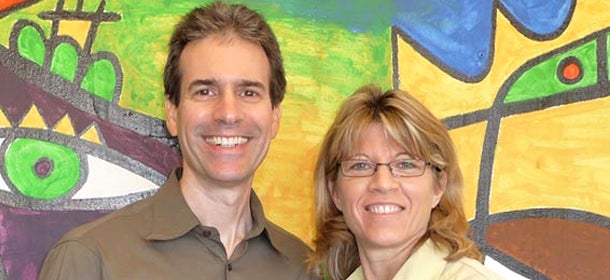Past Your Converted Adsense Code
Co-founder Sally Outlaw talks about how her site helps fledgling businesses find the money to get started.

I was watching a prime time news program with a story about the first web-financed soccer club in England. This venture's backers were upset that only the billionaires owned sports clubs, so they reached out to the masses for small contributions. The club would take all the funding, buy players and build their own team. Within the first 48 hours, they raised $400,000. When I saw this, I thought, "Man, why isn't this being applied to entrepreneurs?"
I ran across Kickstarter and IndieGoGo, but they were focused on creative endeavors--films and music. I didn't see anything out there 100 percent dedicated to entrepreneurs. A lot of companies are not geared for the ROI that angel investors want. Crowdfunding seemed like the only viable way to get some startups funded, including my own. That's really the story of how we started--out of my own frustration.
We're moving beyond the funding platform and taking a longer view. We work really hard to get entrepreneurs to the site, and they work really hard to get people to back them. Why lose them after that?
Their products need exposure, so we're developing a site marketplace. We're launching an accelerator program that will provide resources beyond the funding phase. We give crowdfunding workshops. We're talking about introducing additional incentives--maybe $5,000 in business services for free if you reach your funding goal. We're trying to be more full-service. The downside to crowdfunding is you miss that piece--mentoring and connection to resources. We're trying to plug that in so we can help you for many years to come.
We review submissions for echoes of legitimacy. We ask for links to social media platforms to see what you're doing to communicate and promote. We don't do a tremendous amount of business model evaluation. We're not investors. What we're looking for: Do you understand the crowdfunding ecosystem? Do you understand how hard you're going to have to work to get funding? Crowdfunding for some people is a post-it-and-forget-it proposition. That is not how it works.
Some people want to break fundraising into stages. They need $100,000, but think they can raise $5,000 for a prototype, then come back for more. But there is a danger of funder burnout. One way we're handling that is by bringing in partners with larger pockets. If you're successful on our site and your idea is exciting, we'll say, "Hey, you should come to our pitch event." It's very rare you'll get big dollars through crowdfunding, but we're leaving that door open through partnerships with people who can extend the reach. We'll make that call for you. As told to Dan O'Shea









0 comments:
Post a Comment